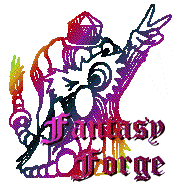
Return to Basic Equipment Menu
|
Rulers
Rulers come in various sizes. Often it is not even
important whether a measured rule is used; usually all that
is needed is a straight edge, which can be the edge of a
ruler as easily as a piece of folded paper. Defined as the
shortest distance between two points, there is no geometric
proof for straightness. Rather, straight is an axiom, a
given, that we often use to create a feeling of precision in
drawing. Too often it is overused, but when you need a
straight line, there is nothing like a ruler to help you
make it.
|
There are many different commercially produced straight edge
drawing utensils. These range in size from short "mini" rulers to
longer yardsticks and beyond. With a right angle lip at the end, we
call such a device a t-square. These are used when we need something
drawn squarely with a drawing surface like a drafting table or a
drawing board. Triangular based rules are produced as "drafting
scales." These tools commonly have one edge marked in inches, and
others marked to other scaling increments. Fancier models even attach
to large swing arms or roll evenly across the drawing surface. Here
are some different looking versions of the common "straight edge"
drawing tool.
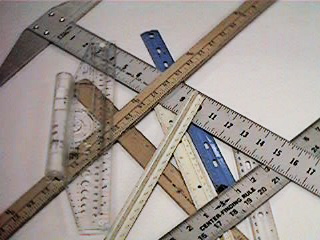
Arguments can be made for or against the metric system. I
personally like and prefer the metric system in most cases, but we
cannot always have our way. In some parts of the world the English
system is standard. With this in mind, here are some common
measurement conventions and tips.
- When measuring less than an inch with a ruler that begins its
first inch exactly on the end of the ruler, use the second inch
instead. The distance from the 0 to the 1 is the same as from the
1 to the 2, and a chewed up or inaccurate end can make a big
difference in a small measurement.
- Inches are broken down by halves. The longest measuring lines
are at the whole inch markings and are numbered. The second
longest lines are the half inch markings. The third longest lines
are the quarter inch markings (half of a half). The fourth longest
lines are the eighth inch markings (half of a half of a half). The
next smaller increment is a sixteenth, smaller still would be
thirty-seconds and sixty-fourths (neither shown)
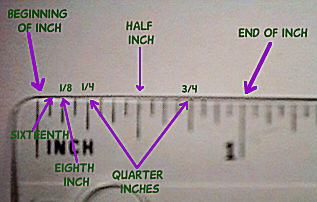
- There are twelve inches in a foot, and three feet (thirty-six
inches) in one yard.
- If possible make all of your calculations in either the metric
system or the English system. The less you have to convert one to
the other, the less likely your calculations are to be inaccurate
due to round off errors.
|
The metric system is based on the theoretical diameter
of the earth. Once broken into segments, one meter
represents one fraction of the spherically calculated
distance from a polar cap to the equator. Meters are
broken down into ten equal length segments called
decimeters, decimeters are broken into ten segments
called centimeters (one one hundredth of a meter), and
centimeters are broken down into ten millimeters.
|
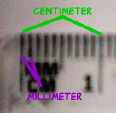
|
- When creating precise lines that must be square with others,
always make at least two measurements and connect the dots.
Guesswork does have its place, but if your work must be precise it
must be well measured.
- If using a pen with a ruler, always try and use one with a
metal furl that protects the edge of the ruler from ink leakage.
Ball point pens and certain felt tips are built for this sort of
work. There are pen rulers with slightly raised lips on the edge
to minimize ink bleed as well. If you do not have such a ruler you
can make one temporarily by placing a piece of masking tape on the
back of a normal one. Since the tape will tend to collect dirt,
this is not recommended for long term use.
Using the Proper Drawing
Angle
When using a pencil with a straight edge, make sure that your
point is sharp. Dull pencils can give wide and indeterminate lines.
There are also special drafting pens that are designed to be used
with straight edges. These pens will typically have a metal or
plastic sheath that protects the tip from actually touching the edge
of a ruler. Certain types of ruler make are easier to work with for
different tasks, here we will deal with flat edged, chiseled edges
and beveled or "lip" rulers.
When using a flat edged straight edge, keep pencils pointed into
the corner for the straightest line, and keep pens directly upright
for the least ink bleed.
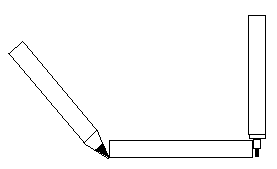
Chiseled edged rulers are best for pencils only, and work best
then the pencil is held sharply perpendicular to the edge.
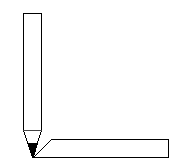
Rulers with a lip are generally best for ink.
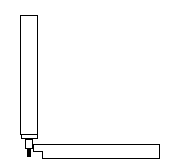
Using a Straight Edge With a Pen or Brush
that Bleeds
To use a ruler with a dip pen or sable brush, place one finger
under the forward rim of the straight edge.
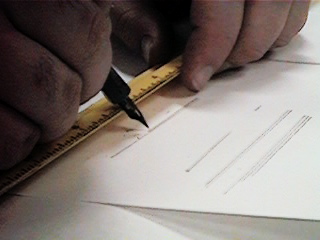
By tilting the nib of the pen or furl of the brush across the
raised edge of the ruler, a fairly straight line can be drawn or
painted.
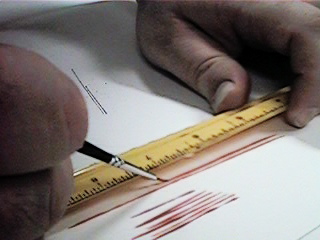
Note: This is not necessarily a precise method, but it works.
|Templates|Triangles|Curves|Rulers|Protractors|Lettering
Guides|Compasses|
[Return
to top of page]








